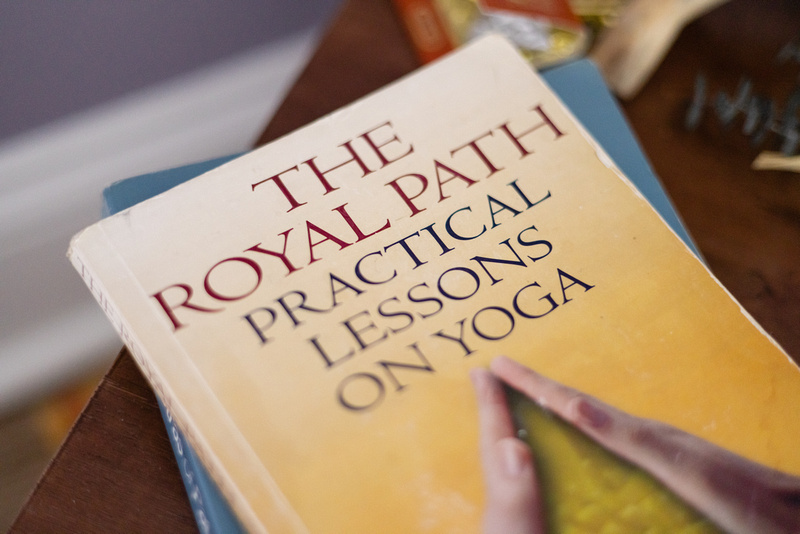yoga
When I tell someone that I am a yoga teacher, the first question is always "what type of yoga do you teach?" Often what they are asking about is what *style* of asana (posture) practice I teach, but it's important to distinguish style from tradition (as with a foundation of authentic tradition, you can practice and teach many styles of posture practice!).
I have been blessed to have been taught by some of this nation's most prestigious teachers, part of an unbroken lineage that dates back thousands of years in the tradition of the Himalayan masters, with Classical and Tantric roots. Every modern "posture style" of practice you've ever heard of has branched out from these two ancient traditions. Some of these are wonderful paths that strive to maintain the rich and complete teachings of authentic yoga, but unfortunately many of these are simply "yoga-flavored exercise"- a diluted, appropriated practice that has little to do with what yoga really is.
So what is yoga? Classical yoga (also known as raja yoga (the royal path) or ashtanga yoga (not to be confused with the modern, branded "style" with the same name)) is a complete system for moving us closer to balance in body, mind and spirit. Yoga means "union", and through the guidance of a qualified teacher you begin to invite union of body and mind (through the breath, which links the two), progressing to a deeper relationship with the experience of union between mind and spirit, between each other as sentient beings, and between our individual spirit and universal consciousness.
It is a practice that can be adapted to any age or physical fitness level; in authentic yoga, the MAIN focus is on quieting the mind (yoga sutra 1.2), and so physical limitations can easily be worked around. When we are working with asana (posture) we build our practice around yoga sutra 2.46, cultivating greater comfort and stability in our bodies and indeed, in our lives. As far as styles of asana practice, I am well versed in teaching everything from gentle "yin" type practices to more heat building, strength-based practices, to prenatal and in between. I work to create practices that meet the unique needs of the student(s) in front of me.
Some of the many benefits of a regular yoga practice include:
-managing stress
-increasing self awareness and acceptance
-nourishing the nervous system (which offers a myriad of benefits)
-increasing energy
-improving immune system function
-improving flexibility, balance and strength
-improving posture
-beneficial to an array of medical conditions from high blood pressure to arthritis to clinical depression to asthma
If you would like to learn more about the eightfold path of yoga, you may visit: www.expressionsofspirit.com/yoga/eight-limbs.htm , or of course you are welcome to contact me and I will be happy to answer any questions you may have. You may also visit The Himalayan Institute to learn more about the history, tradition and teachings of my own teachers, and if you are seeking a book to deepen your understanding, I highly recommend "The Royal Path; Practical Lessons on Yoga" by Sri Swami Rama. It's an accessible read that's not too heavy or overwhelming, but thorough and informative (and if it's helpful to know, we do have it available in our lending library here at the office). Thank you for visiting, peace to you!

Ayurveda
Ayurveda is often referred to as the "sister science of yoga". Closely intertwined, ayurveda has been around for thousands of years. It is a holistic system of medicine, wellness and practices, based on the rhythms and elements of nature. These elements present in us in what we refer to as "doshas". The doshas are constitutions, or energies, and each have unique qualities. Vata is air and space, Pitta is fire and water, Kapha is earth and water. Understanding our own primary dosha (*primary* as we all have all of them within us) and more importantly, recognizing where our imbalances lie, can assist us to moving towards greater balance. In ayurveda, the sanskrit word for health is "svastha", which means "the state of being in which body, mind, soul and senses are in blissful equilibrium".
Without overthinking "what's my dosha" (which can feel like asking "who am I??") or getting overwhelmed with trying to gain an in-depth understanding of ayurveda, we can use the idea of qualities and elements, combined with common sense, to assist us. As an example, if we tend to get "fired up" easily, irritable and angry, we may think about lessening the amount of fiery, spicy foods we eat and instead leaning toward cooler, calming foods. Or if we tend to feel spacey, flighty, anxious (air and space), perhaps that fast-moving vinyasa class isn't nearly as beneficial to us as a grounding, slow yin class might be. And there are practices that are universal and helpful to all- some practices like tongue scraping and using a neti pot are becoming quite popular in the west!
When you schedule an Ayurvedic massage session with me, I will try to get a sense of your energy and qualities during our pre-session consult, both from your communication and my own observation. I use sesame oil as the base for massage, as this is universal to all doshas, but massage techniques/pace, as well as herbs or essential oils, may be adjusted to best meet your unique needs.
If you would like to learn more about what ayurveda is: Intro to Ayurveda
If you are interested in scheduling a telehealth session with an Ayurvedic Health Counselor: Consult with Judy Moulton, E-RYT 500, Ayurvedic Health Counselor, Ayurvedic Yoga Therapist




